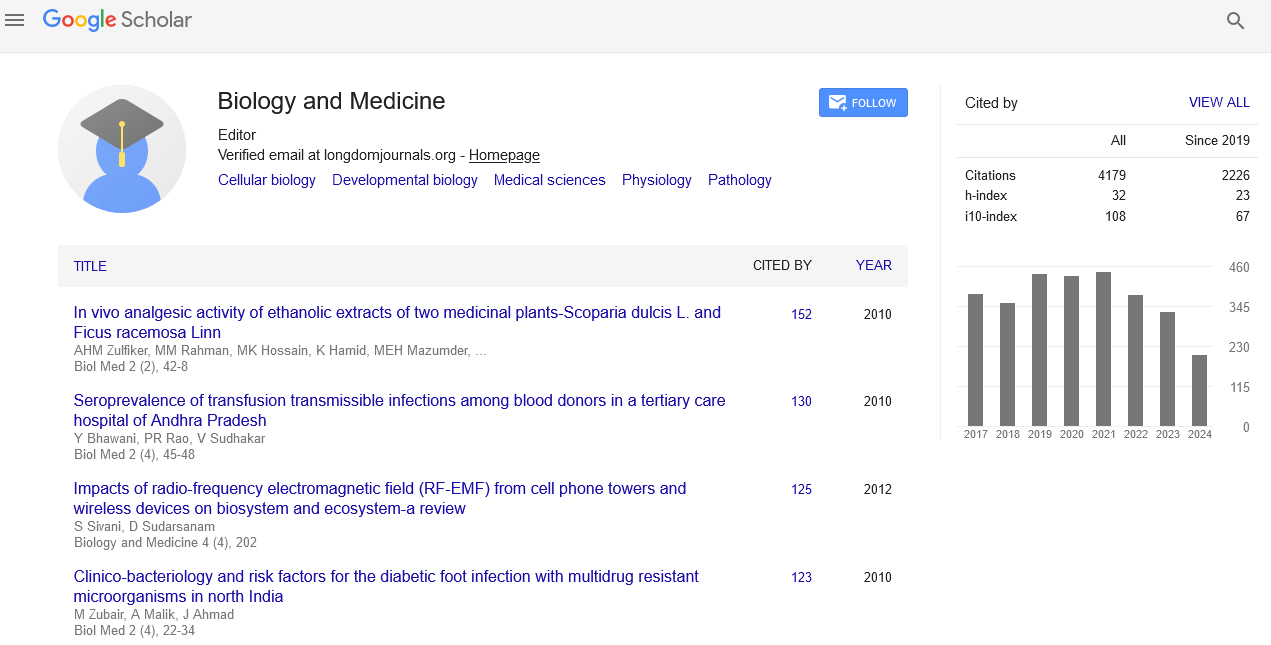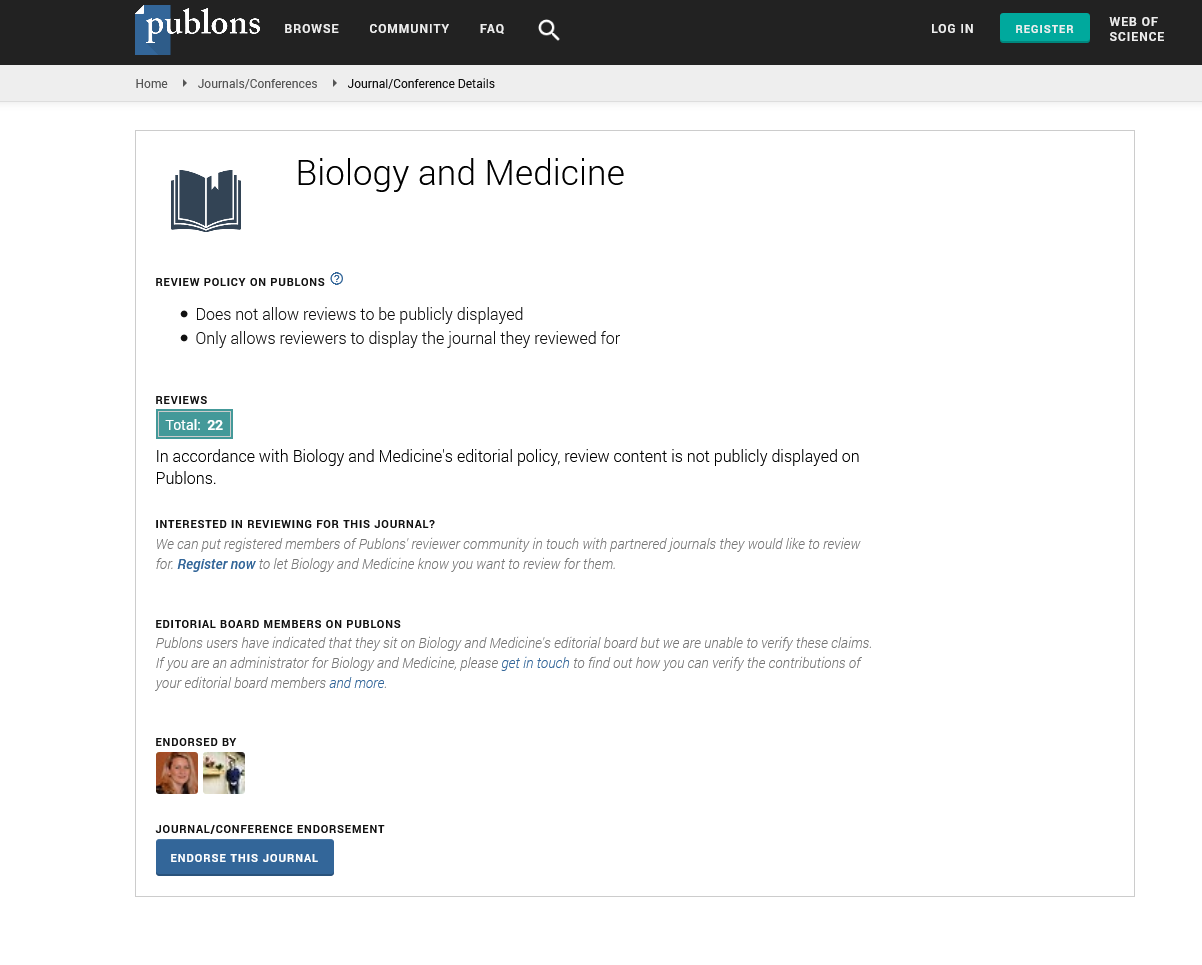Indexed In
- Open J Gate
- Genamics JournalSeek
- CiteFactor
- Cosmos IF
- Scimago
- Ulrich's Periodicals Directory
- Electronic Journals Library
- RefSeek
- Hamdard University
- EBSCO A-Z
- Directory of Abstract Indexing for Journals
- OCLC- WorldCat
- Proquest Summons
- Scholarsteer
- ROAD
- Virtual Library of Biology (vifabio)
- Publons
- Geneva Foundation for Medical Education and Research
- Google Scholar
Useful Links
Share This Page
Journal Flyer

Open Access Journals
- Agri and Aquaculture
- Biochemistry
- Bioinformatics & Systems Biology
- Business & Management
- Chemistry
- Clinical Sciences
- Engineering
- Food & Nutrition
- General Science
- Genetics & Molecular Biology
- Immunology & Microbiology
- Medical Sciences
- Neuroscience & Psychology
- Nursing & Health Care
- Pharmaceutical Sciences
Abstract
A study of biofilm production by gram-negative organisms isolated from diabetic foot ulcer patients
*Zubair M, Malik A, Ahmad J, Rizvi M, Farooqui KJ, Rizvi MW
The present study was undertaken to study the difference in antibiotic resistance profile and minimum antibiotic concentration (MIC) of biofilm producing and non-biofilm producing gram-negative bacilli isolated from diabetic foot ulcer (DFU) patients in a tertiary care hospital in North India. Among the diabetic foot patients, 73.6% were males and 15% were females. 77.1% had T2DM whereas only 24.4% patients had T1DM. Poor glycemic control and poor HbA1c (>8) was observed in 68.7% and 70.1% patients respectively. Among the 57 patients, 97 gramnegative bacilli were isolated in which mixed bacterial infection was found in 67.8% and monomicrobial in 32.2% only. Escherichia coli was the most common (42.2%) isolate followed by Pseudomonas aeruginosa (23.7%), Klebsiella oxytoca (11.3%), Klebsiella pneumonia (9.2%), Proteus vulgaris (5.1%), Acinetobacter sp (5.1%), Proteus mirabilis (2%) and Morganella morganii (1.0%). 77.1% DFU patients had infection by biofilm producing organisms. BFP positive status was associated with the presence of neuropathy (O.R. 7.65), osteomyelitis (O.R. 3.14), duration of ulcer (O.R. 25.7), grade of ulcer (O.R. 9.12), necrotising ulcer (O.R. 14.4) and ulcer size >4cm2 (O.R. 3.30) but not with patients characteristic, type of diabetes and type of diabetes, or duration of hospital stay. Poor glycemic control in 56.1% patients, amputation (24.5%), hospital stay (38.5%) and age distribution were independently associated with risk of biofilm producing infection in diabetic foot patients.


